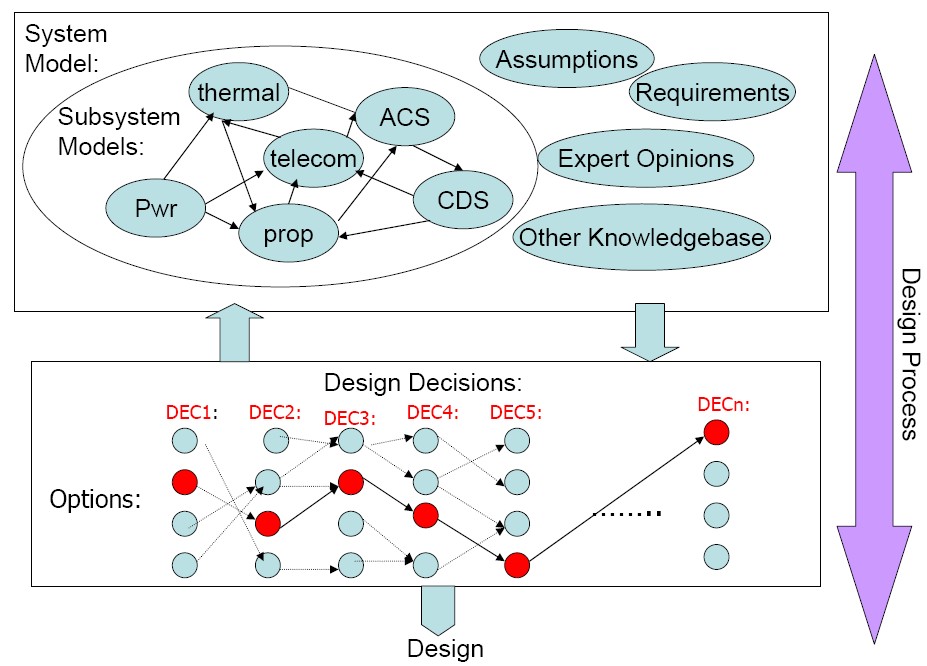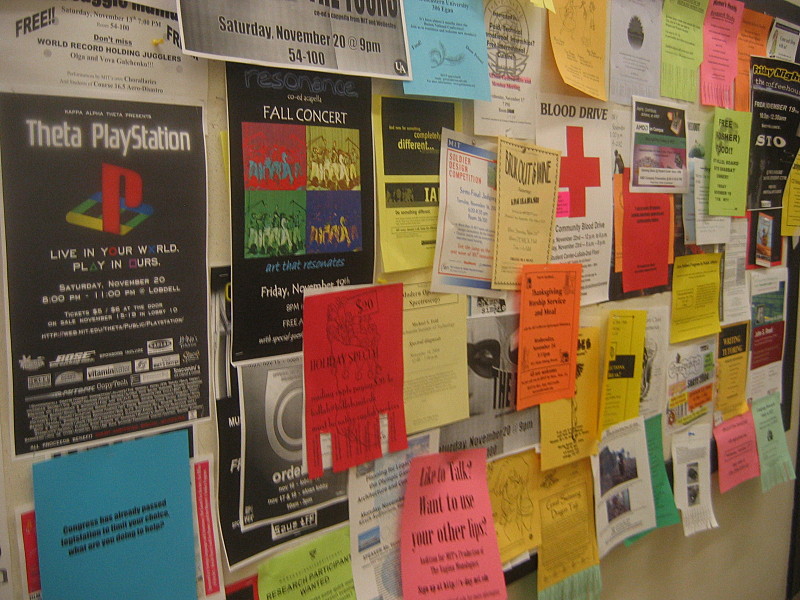|
Design Rationale
A design rationale is an explicit documentation of the reasons behind decisions made when designing a system or artifact. As initially developed by W.R. Kunz and Horst Rittel, design rationale seeks to provide argumentation-based structure to the political, collaborative process of addressing wicked problems. Overview A design rationale is the explicit listing of decisions made during a design process, and the reasons why those decisions were made.Jarczyk, Alex P.; Löffler, Peter; Shipman III, Frank M. (1992), "Design Rationale for Software Engineering: A Survey", ''25th Hawaii International Conference on System Sciences'', 2, pp. 577-586 Its primary goal is to support designers by providing a means to record and communicate the argumentation and reasoning behind the design process.Horner, J.; Atwood, M.E. (2006), "Effective Design Rationale: Understanding the Barriers", in Dutoit, A.H.; McCall, R.; Mistrík, I. et al., Rationale Management in Software Engineering, Springer ... [...More Info...] [...Related Items...] OR: [Wikipedia] [Google] [Baidu] |
Decision Based Design Structure
Decision may refer to: Law and politics * Judgment (law), as the outcome of a legal case *Landmark decision, the outcome of a case that sets a legal precedent * ''Per curiam'' decision, by a court with multiple judges Books * ''Decision'' (novel), a 1983 political novel by Allen Drury * ''The Decision'' (novel), a 1998 book in the ''Animorphs'' series Sports * Decision (baseball), a statistical credit earned by a baseball pitcher *Decisions in combat sports * Decisions (professional wrestling), by which a wrestler scores a point against his opponent Film and TV * ''Decision'' (TV series), an American anthology TV series * ''The Decision'' (play), by the 20th-century German dramatist Bertolt Brecht * ''The Decision'' (TV special), in which NBA player LeBron James announced that he would switch teams * "The Decision" (song), by English indie rock band Young Knives Music Albums * ''Decisions'' (George Adams and Don Pullen album), 1984 * ''Decisions'' (The Winans album), 1987 Son ... [...More Info...] [...Related Items...] OR: [Wikipedia] [Google] [Baidu] |
Issue-Based Information System
The issue-based information system (IBIS) is an argumentation-based approach to clarifying wicked problems—complex, ill-defined problems that involve multiple stakeholders. Diagrammatic visualization using IBIS notation is often called issue mapping. IBIS was invented by Werner Kunz and Horst Rittel in the 1960s. According to Kunz and Rittel, "Issue-Based Information Systems (IBIS) are meant to support coordination and planning of political decision processes. IBIS guides the identification, structuring, and settling of issues raised by problem-solving groups, and provides information pertinent to the discourse." Subsequently, the understanding of planning and design as a process of argumentation (of the designer with himself or with others) has led to the use of IBIS in design rationale, Originally presented to the ACADIA '88 Conference, Association for Computer Aided Design in Architecture, University of Michigan, October 1988. where IBIS notation is one of a number of di ... [...More Info...] [...Related Items...] OR: [Wikipedia] [Google] [Baidu] |
IDEF6
IDEF6 or Integrated Definition for Design Rationale Capture is a method to facilitate the acquisition, representation, and manipulation of the design rationale used in the development of enterprise systems. This method, that wants to define the motives that drive the decision-making process, is still in development. Rationale is the reason, justification, underlying motivation, or excuse that moved the designer to select a particular strategy or design feature. More simply, rationale is interpreted as the answer to the question, “Why is this design being done in this manner?” Most design methods focus on what the design is (i.e., on the final product, rather than why the design is the way it is). IDEF6 is part of the IDEF family of modeling languages in the field of systems and software engineering. Overview When explicitly captured, design rationale typically exists in the form of unstructured textual comments. In addition to making it difficult, if not impossible to find ... [...More Info...] [...Related Items...] OR: [Wikipedia] [Google] [Baidu] |
Goal Structuring Notation
Goal structuring notation (GSN) is a graphical diagram notation used to show the elements of an argument and the relationships between those elements in a clearer format than plain text. Often used in safety engineering, GSN was developed at the University of York during the 1990s to present safety cases. The notation gained popularity as a method of presenting safety assurances but can be applied to any type of argument and was standardized in 2011. GSN has been used to track safety assurances in industries such as clinical care aviation, automotive, rail, traffic management and nuclear power and has been used in other contexts such as security cases, patent claims, debate strategy, and legal arguments. History The goal structuring notation was first developed at the University of York during the ASAM-II (A Safety Argument Manager II) project in the early 1990s, to overcome perceived issues in expressing safety arguments using the Toulmin method. The notation was further develop ... [...More Info...] [...Related Items...] OR: [Wikipedia] [Google] [Baidu] |
Architectural Decision
In software engineering and software architecture design, architectural decisions are design decisions that address architecturally significant requirements; they are perceived as hard to make and/or costly to change. Characteristics Architectural decisions influence and impact the non-functional characteristics of a system. Each architectural decision describes a concrete, architecturally significant design issue (a.k.a. design problem, decision required) for which several potential solutions (a.k.a. options, alternatives) exist. An architectural decision captures the result of a conscious, often collaborative option selection process and provides design rationale for the decision making outcome, e.g., by referencing one or more of the quality attributes addressed by the architectural decision and answering "why" questions about the design and option selection. Architectural decisions concern a software system as a whole, or one or more of the core components of such a system. Ty ... [...More Info...] [...Related Items...] OR: [Wikipedia] [Google] [Baidu] |
Software Architecture
Software architecture is the fundamental structure of a software system and the discipline of creating such structures and systems. Each structure comprises software elements, relations among them, and properties of both elements and relations. The ''architecture'' of a software system is a metaphor, analogous to the architecture of a building. It functions as a blueprint for the system and the developing project, which project management can later use to extrapolate the tasks necessary to be executed by the teams and people involved. Software architecture is about making fundamental structural choices that are costly to change once implemented. Software architecture choices include specific structural options from possibilities in the design of the software. For example, the systems that controlled the Space Shuttle launch vehicle had the requirement of being very fast and very reliable. Therefore, an appropriate real-time computing language would need to be chosen. Addition ... [...More Info...] [...Related Items...] OR: [Wikipedia] [Google] [Baidu] |
Spiral Model
The spiral model is a risk-driven software development process model. Based on the unique risk patterns of a given project, the spiral model guides a team to adopt elements of one or more process models, such as incremental, waterfall, or evolutionary prototyping. History This model was first described by Barry Boehm in his 1986 paper, "A Spiral Model of Software Development and Enhancement". In 1988 Boehm published a similar paper to a wider audience. These papers introduce a diagram that has been reproduced in many subsequent publications discussing the spiral model. These early papers use the term "process model" to refer to the spiral model as well as to incremental, waterfall, prototyping, and other approaches. However, the spiral model's characteristic risk-driven blending of other process models' features is already present: In later publications, Boehm describes the spiral model as a "process model generator", where choices based on a project's risks generate an app ... [...More Info...] [...Related Items...] OR: [Wikipedia] [Google] [Baidu] |
University Of California
The University of California (UC) is a public land-grant research university system in the U.S. state of California. The system is composed of the campuses at Berkeley, Davis, Irvine, Los Angeles, Merced, Riverside, San Diego, San Francisco, Santa Barbara, and Santa Cruz, along with numerous research centers and academic abroad centers. The system is the state's land-grant university. Major publications generally rank most UC campuses as being among the best universities in the world. Six of the campuses, Berkeley, Davis, Irvine, Los Angeles, Santa Barbara, and San Diego are considered Public Ivies, making California the state with the most universities in the nation to hold the title. UC campuses have large numbers of distinguished faculty in almost every academic discipline, with UC faculty and researchers having won 71 Nobel Prizes as of 2021. The University of California currently has 10 campuses, a combined student body of 285,862 students, 24,400 faculty members, 1 ... [...More Info...] [...Related Items...] OR: [Wikipedia] [Google] [Baidu] |
Compendium (software)
Compendium is a computer program and social science tool that facilitates the mapping and management of ideas and arguments. The software provides a visual environment that allows people to structure and record collaboration as they discuss and work through wicked problems. The software was released by the not-for-profit Compendium Institute. The current version operationalises the issue-based information system (IBIS), an argumentation mapping structure first developed by Horst Rittel in the 1970s. Compendium adds hypertext functionality and database interoperability to the issue-based notation derived from IBIS. Compendium source code was fully released under the GNU Lesser General Public License on 13 January 2009. Compendium can still be downloaded, but is no longer actively maintained. Applications Compendium visually represents thoughts and illustrates the various interconnections between different issues, questions, ideas, answers, and arguments. It can be used for appl ... [...More Info...] [...Related Items...] OR: [Wikipedia] [Google] [Baidu] |
Bulletin Board
A bulletin board (pinboard, pin board, noticeboard, or notice board in British English) is a surface intended for the posting of public messages, for example, to advertise items wanted or for sale, announce events, or provide information. Bulletin boards are often made of a material such as cork to facilitate addition and removal of messages, as well as a writing surface such as blackboard or whiteboard. A bulletin board which combines a pinboard (corkboard) and writing surface is known as a combination bulletin board. Bulletin boards can also be entirely in the digital domain and placed on computer networks so people can leave and erase messages for other people to read and see, as in a bulletin board system. Bulletin boards are particularly prevalent at universities. They are used by many sports groups and extracurricular groups and anything from local shops to official notices. Dormitory corridors, well-trafficked hallways, lobbies, and freestanding kiosks often have cor ... [...More Info...] [...Related Items...] OR: [Wikipedia] [Google] [Baidu] |
Video Conference
Video is an electronic medium for the recording, copying, playback, broadcasting, and display of moving visual media. Video was first developed for mechanical television systems, which were quickly replaced by cathode-ray tube (CRT) systems which, in turn, were replaced by flat panel displays of several types. Video systems vary in display resolution, aspect ratio, refresh rate, color capabilities and other qualities. Analog and digital variants exist and can be carried on a variety of media, including radio broadcast, magnetic tape, optical discs, computer files, and network streaming. History Analog video Video technology was first developed for mechanical television systems, which were quickly replaced by cathode-ray tube (CRT) television systems, but several new technologies for video display devices have since been invented. Video was originally exclusively a live technology. Charles Ginsburg led an Ampex research team developing one of the first practical vi ... [...More Info...] [...Related Items...] OR: [Wikipedia] [Google] [Baidu] |
GIBIS
Compendium is a computer program and social science tool that facilitates the mapping and management of ideas and arguments. The software provides a visual environment that allows people to structure and record collaboration as they discuss and work through wicked problems. The software was released by the not-for-profit Compendium Institute. The current version operationalises the issue-based information system (IBIS), an argumentation mapping structure first developed by Horst Rittel in the 1970s. Compendium adds hypertext functionality and database interoperability to the issue-based notation derived from IBIS. Compendium source code was fully released under the GNU Lesser General Public License on 13 January 2009. Compendium can still be downloaded, but is no longer actively maintained. Applications Compendium visually represents thoughts and illustrates the various interconnections between different issues, questions, ideas, answers, and arguments. It can be used for appl ... [...More Info...] [...Related Items...] OR: [Wikipedia] [Google] [Baidu] |






